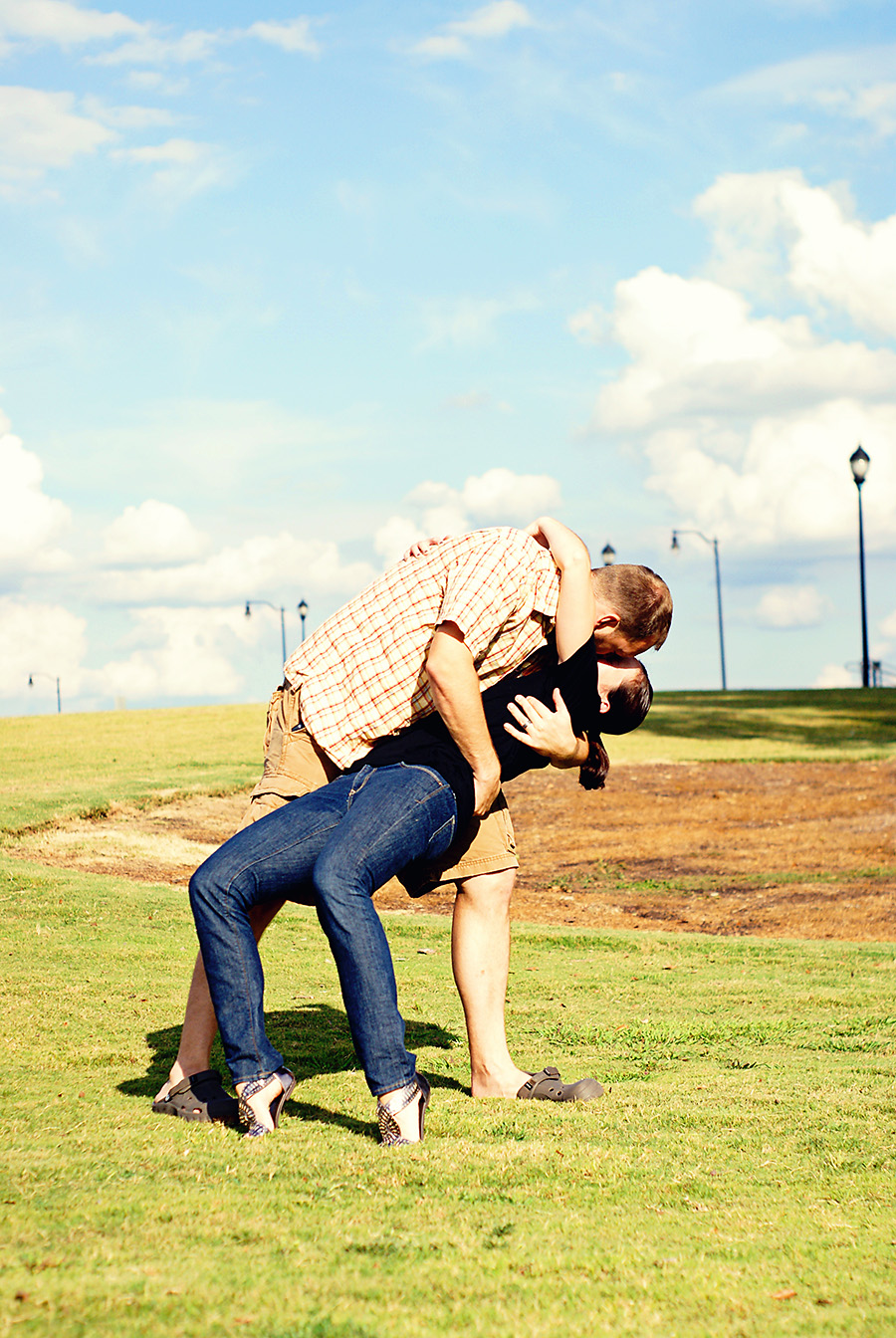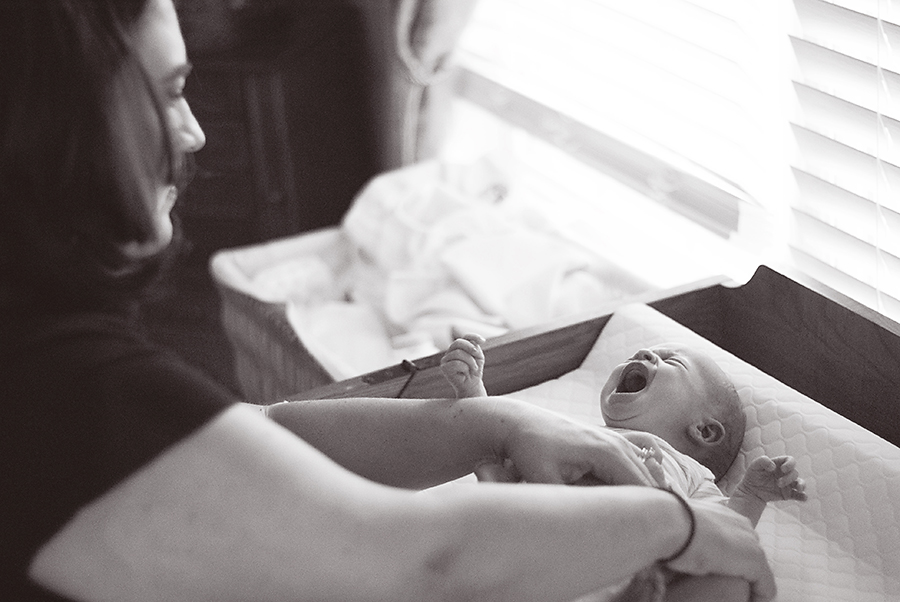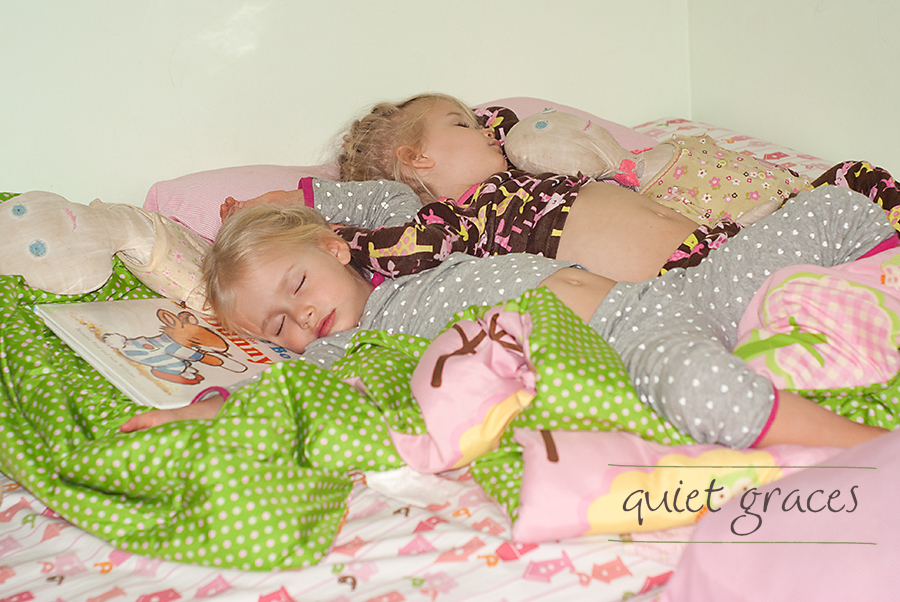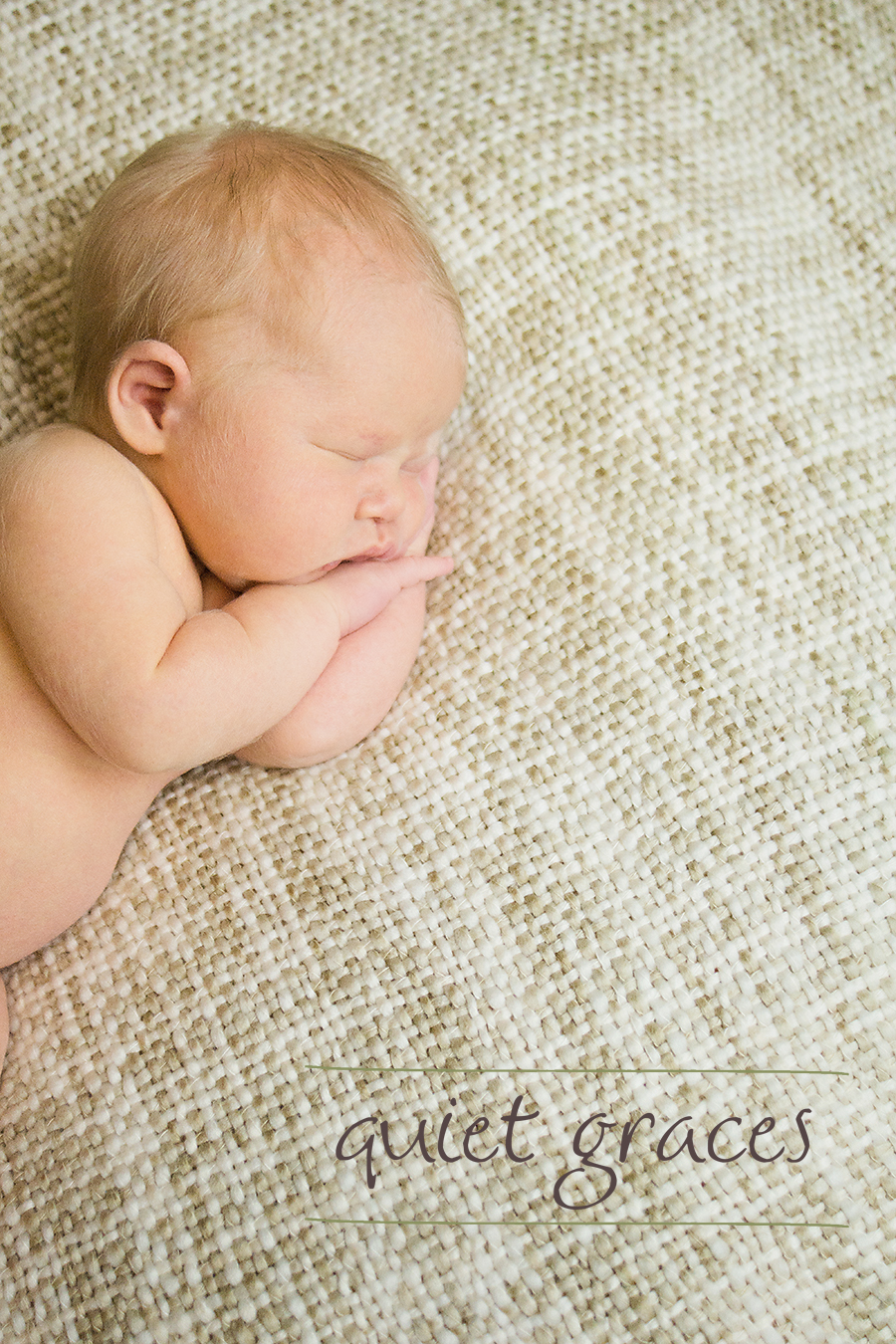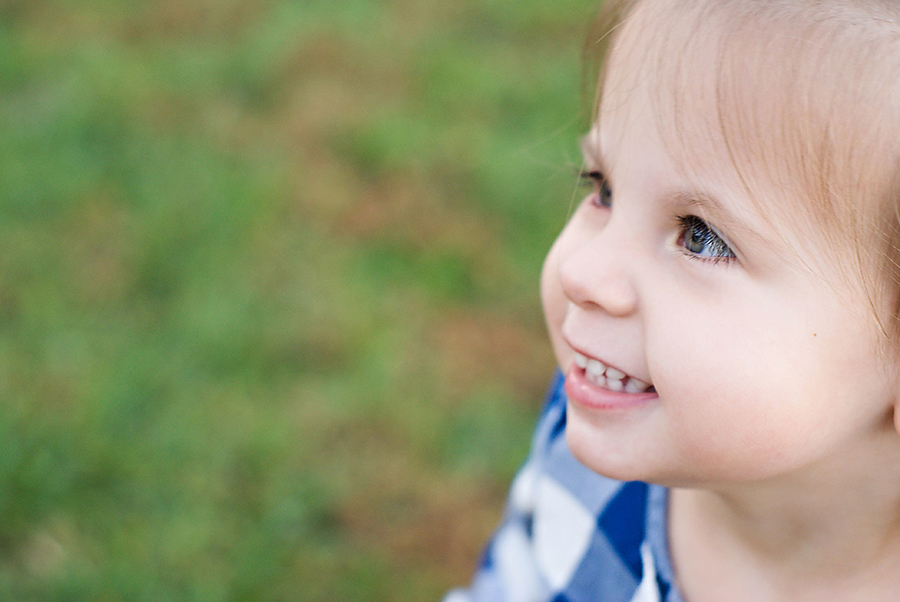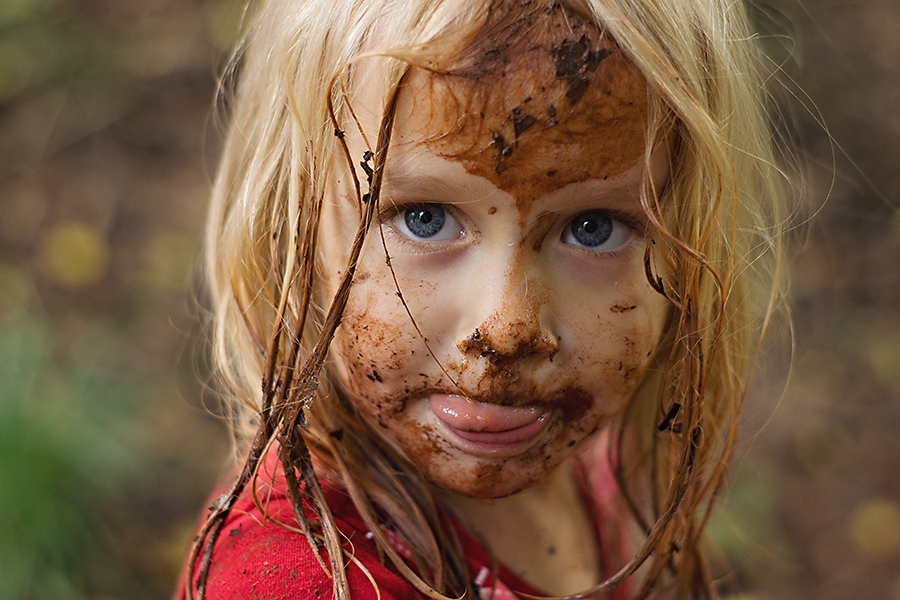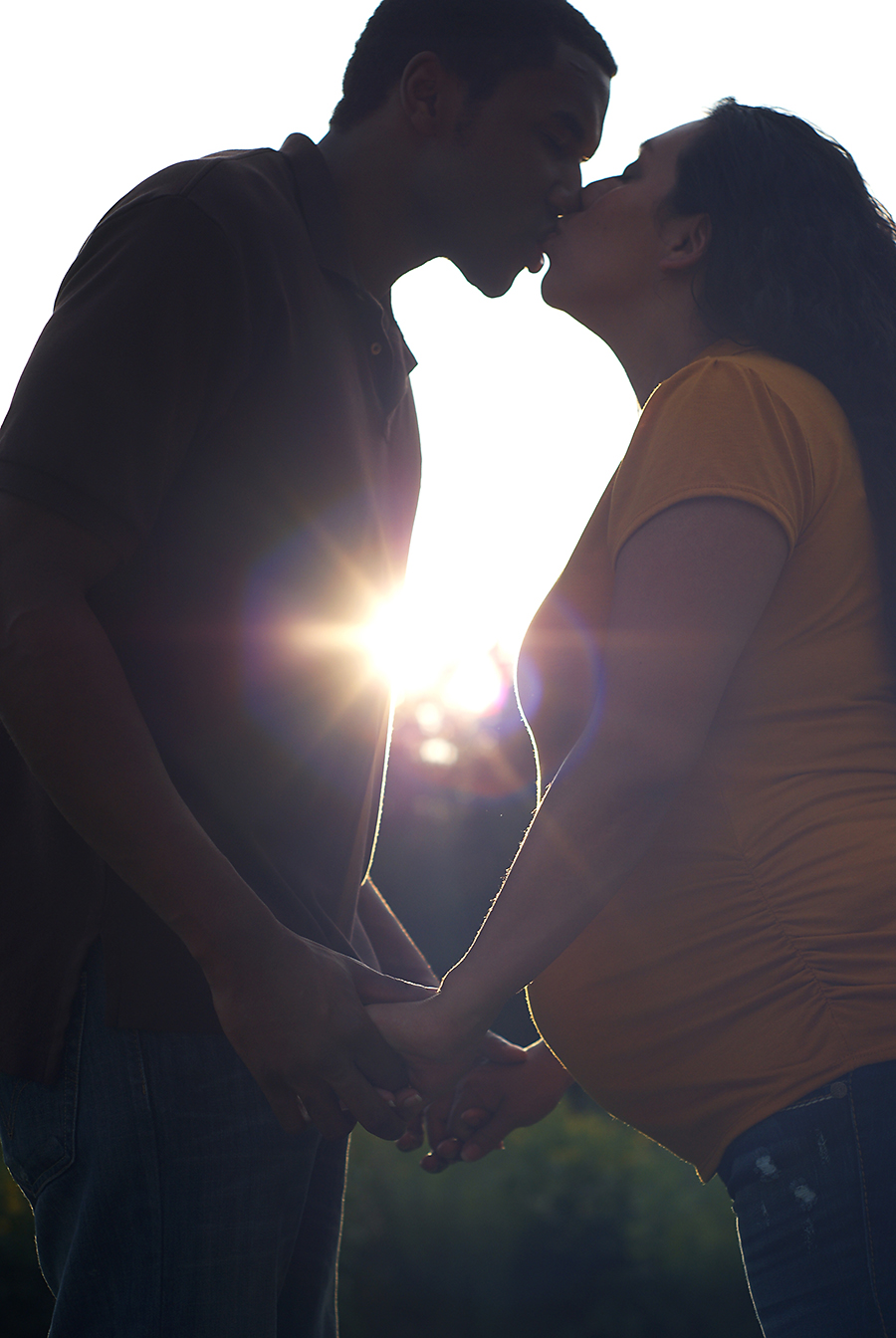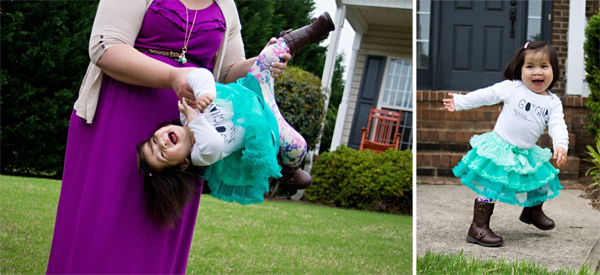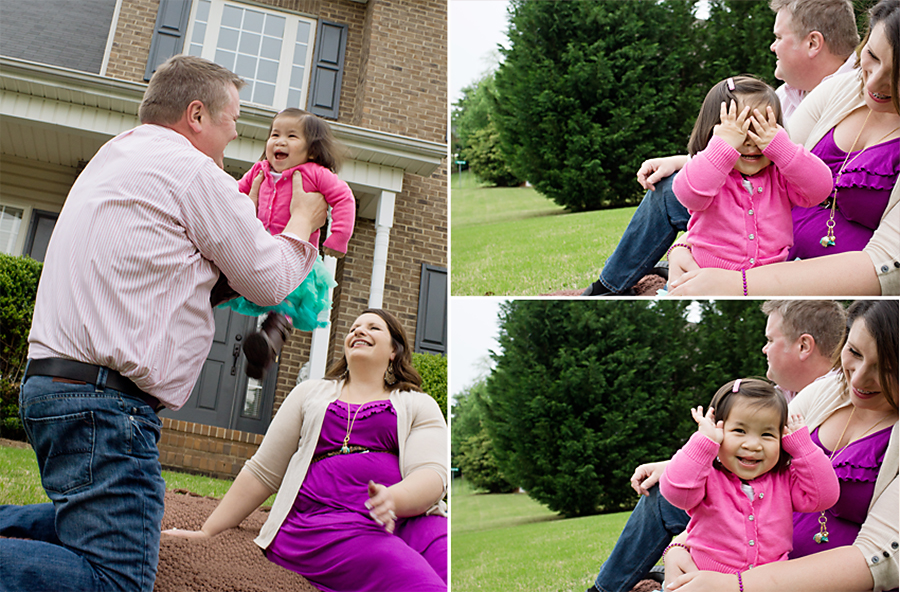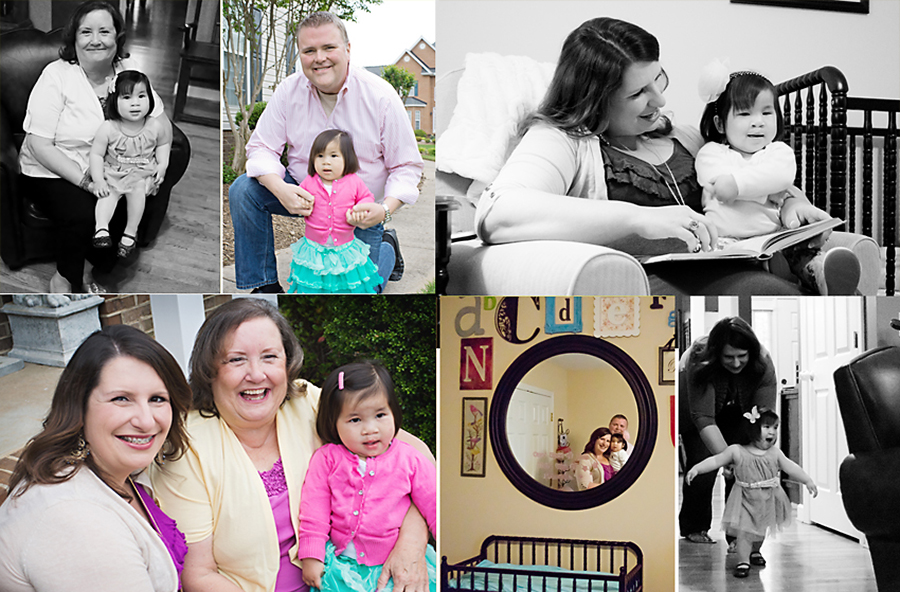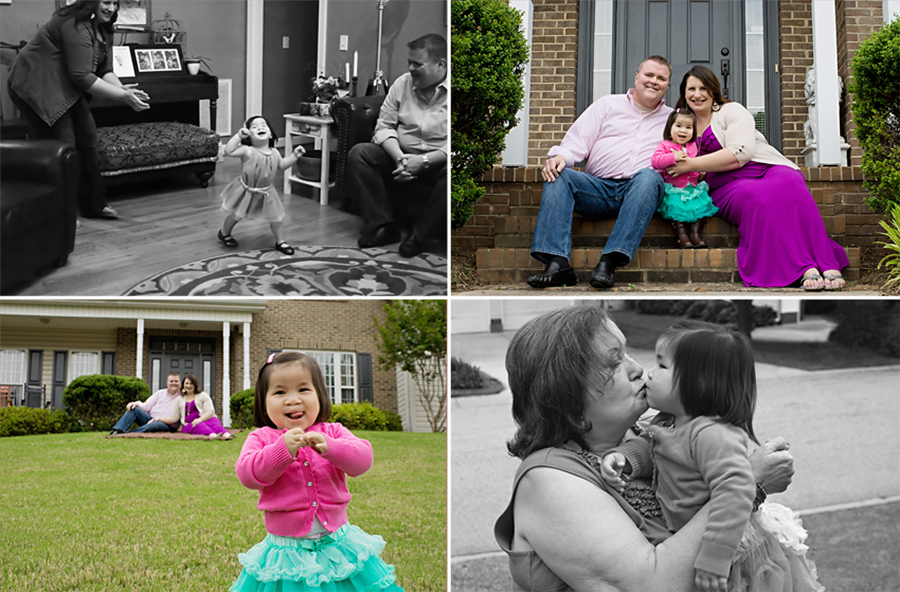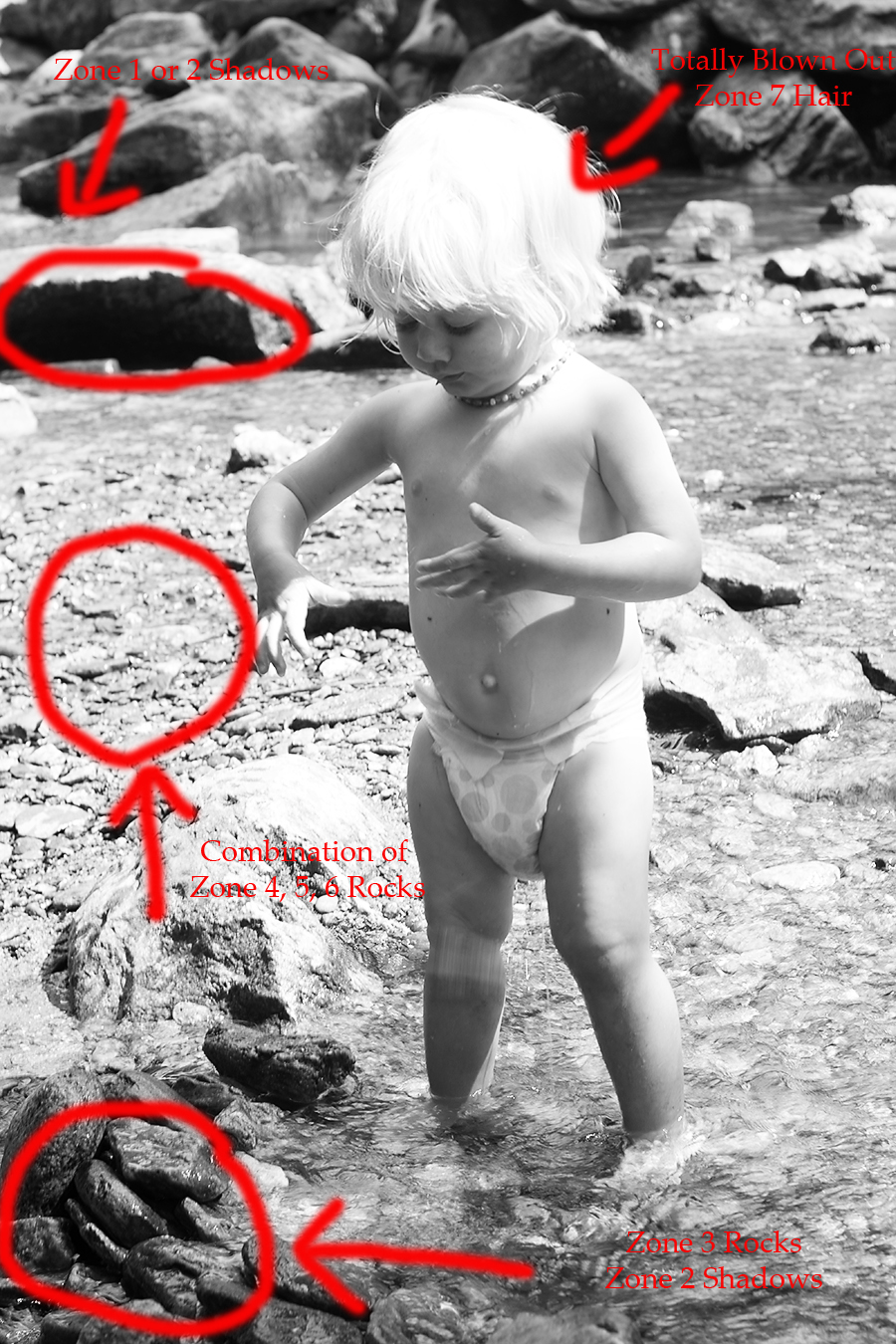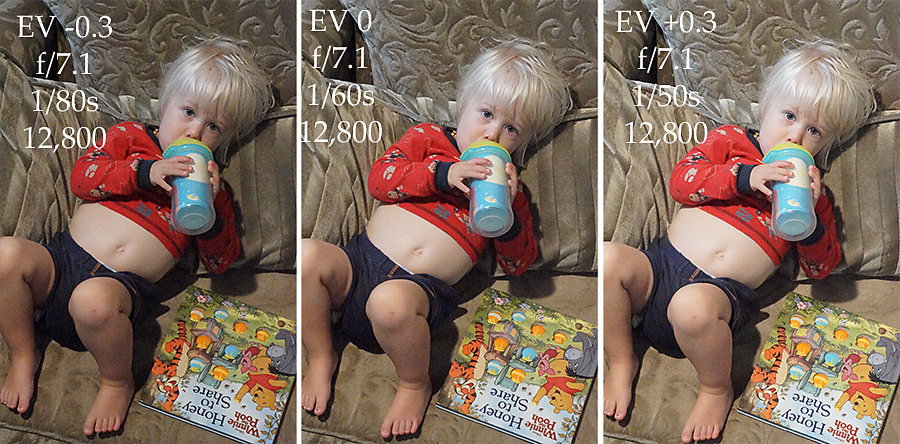16
2013Over the course of the next couple weeks we’re going to learn about one of the key aspects of all photography: light. This post is going a definition of terms overview. It’s here for you to refer to when I use these terms but it’s also here to help you think about these different types of lighting as you’re taking your photos.
Lighting Types
Natural Light
Natural light is this overarching umbrella of photographers who use only the light available to them (and sometimes a reflector). When some photographers use this term, they literally mean the light is natural: coming from the sun, moon, or stars. I have included available light under this umbrella: meaning your light source might be a florescent or incandescent light bulb or even a computer screen 🙂
Full Sun
Full Sun is just what it sounds like. Full sun bearing down on your subject without shade. When most photographers think of full sun it’s between the hours of 10-3 or 4. The sun is high and harsh creating lots of shadows.
Open Shade
When Photographers use the term open shade, we’re referring to placing our subject in a large even shadow and facing them toward the sunlight or reflected light. This is a technique that makes shooting in full sun much less harsh. Dappled shade, or light filtering through something like tree leaves, has a quality of some shady spots and some spots of bright light. This is a far less desirable for portraits.
Available Light
Available light is the light we have available to us. Full sun and open shade both feature available light. Shooting a ballet using only the stage lights already present is using available light. Shooting your sleeping child in the bed next to you using only the light of your laptop is using available light. Available light imagery does not permit the use of light modifiers or flash. This entire course has a focus on available light.
Modified Light
Modified Light is light that a photographer either reflects using specific tools or creates through the use of on camera or off camera flash.
Reflector
A reflector is a white, silver, or gold instrument used to reflect available light into the shadowed areas of your image. You can purchase a ready made reflector for this purpose or you can use something simple like a white poster board or white wall/light cement (after placing your subject intentionally). In my newborn photography, I wear a white shirt to reflect light back to my babies and I sometimes have a parent hold up a burp cloth if I think the shadowed side of the baby needs an extra boost.
On Camera Flash
If you’re using an entry level DSLR/DSLT or a point and shoot (and most of you are), your camera comes equipped with on-camera flash. If your camera also has a hotshoe, you can place an additonal flash unit directly on top of the camera. Throughout this course I have discouraged the use of on-camera flash, but in an upcoming lesson I will show you how and when to use this tool.
Off Camera Flash
Off Camera Flash or lighting is just what you envision being used in a traditional portrait studio. We automatically think of umbrellas and flashes that pop out extra light when the photographer clicks the shutter release. But there are also big large white boxes with lights inside called softboxes. And there are lights that produce the same amount of light at all times called continuous lighting (which I use). I will not be covering off camera flash during this class. I’m have very little knowledge on this subject and most of you will likely never use off-camera flash.
Light Direction
One of the most important concepts in photography is paying attention to the direction of your light.
Front or Flat
When a soft light is in front of your subject, you’ll produce images with flat or even lighting. If the light is bright and harsh, you’ll find your subject squinting.
Side Lighting
Side lighting when used well produces beautiful shadows and depth to a photo. Photographers use side light from both 90 and 45 degrees in portraits (as well as the range between). I’ll be going over both of these in detail.
Back Lighting
Back lighting is when the light source is coming from behind the subject. Backlighting produces yummy images with light streaming from behind or outlining your subject, but is very hard to expose for the skin of a portrait subject if you’re not using a large reflector to bounce light back toward your subject. Most back lit photos that are not silhouettes (like the one above) have a significant amount of work done to them in post processing unless a light modifier was used to make sure a portrait subject was not too dark.
Assignment
Real simple assignment this week. I want you to find some images you’ve already created (or take some new ones if you have time) that illustrate some of these lighting types. Upload a couple of your favorites to the Quiet Graces Free Beginner Photography Class Flickr pool and label it with the lighting type you think you used. Class members can give critique on the image itself and I’ll verify that you got the lighting type right. This is solely an exercise to get you seeing the light. 🙂
11
2013Angela contacted me about a session in her home a few months ago. It’s the type of thing that makes my heart jump for joy because I love more than anything capturing everyday beautiful mess. The mundane all mingled with the holy and recorded for the remembering.
Little Chloe was the heartbeat of this family. So many times we all just sat and laughed at her antics, our cheeks aching and our hearts bursting with the intensity of joy.
At the time of our session, Chloe had been in her forever home for just over 4 months.
When I asked Angela the story she wanted this session to tell she said this:
“I want it to speak of the joy of being adopted into God’s family. How being called His own is the best gift.”
And little Chloe’s antics told this story with clarity.
09
2013Today features a really technical post on how to nail exposure using your knowledge of stops and something called The Zone System. Again, if you like technical stuff, you’ll thrive off this post. If you don’t like technical stuff, read over it but feel free to keep clicking away until you figure it out on your own. The wonderful thing about digital photography is that you do have your LCD screen to check… the not so wonderful thing is that regardless of your choice of Film or Digital, time and the moment you’re shooting will still march on. Find the balance you can live with and go for it.
The Zone System
The Zone System was invented by Ansel Adams for use in film photography. It’s a system that assigns each color tone a stop value and aids the photographer in deciding what to set your exposure from. Ansel Adams pioneered this zone system in a time before color films was widely used and before digital photography was even dreamed up. That means that the world is seen in monochrome which is a little difficult for the modern photographer who is used to color. Let’s take a look at what each of these zones represent with tonality before diving into how to use the Zone system to nail exposure straight out of the camera.
The Tonality of the Zone System
| 1 | 2 | 3 | 4 | 5 | 6 | 7 | 8 | 9 |
Let’s talk real quick about what each color zone contains.
- Zone 1 is dark black. It renders as a smooth black with no texture in the final image.
- Zone 2 is a dark color recorded with the beginning of texture.
- Zone 3 is a dark color with average texture.
- Zone 4 is your average dark foliage, dark stone, shadows in portraits or in landscapes shot in sunlight.
- Zone 5 is dark colored skin, gray stone, average weathered wood tones, and your 18% gray card.
- Zone 6 is average Caucasian skin, light stone, or shadows on snow scapes.
- Zone 7 is very light skin, snow with side-lighting, and my son Sedryn’s crazy blond hair.
- Zone 8 are whites with texture, snow in the full shade, and highlights on average Caucasian skin.
- Zone 9 are glaring texture-less white subjects like snow in full flat sunlight or a white sheet of paper.
Read those again and get a feel for them. Ask yourself: what zone is a bronze statute? What zone is the sand on the beach? How about an orange tabby cat?
Using the Zone System to Set Exposure
The Zone System has us identify the area we’re most likely to loose detail or color when taking our shot. With digital cameras, we’re more likely to blow the highlights than lose detail in the shadowed or dark areas. So we’re always going to want to expose for the highlight that we don’t want to lose detail in. If you’re shooting film, it’s the opposite, you’ll want to expose for the shadowed area that you don’t want to lose detail in.
Remember our good old gray card and 18% gray? That’s zone 5 or middle grey. Remember how your camera meter is always straining to set the average exposure of your scene at 18% gray or Zone 5? If you’re shooting a scene with average contrast, your camera will likely do fine in auto mode. But try to photograph the detail in snow or coal and you’ll be cursing your camera in auto mode for turning both of those things into a Zone 5 middle gray. Or photograph an extremely varied scene and you’ll blow all your highlights in digital photograph and lose all your shadow detail in film photography. Let’s explore how the zone system helps with those two areas.
Photographing snow. What zone is snow? (look up at the chart) It’s Zone 8 in even diffused light. Your camera is trying to turn all that brightness into a Zone 5 essentially underexposing for the way you want the image represented. So you’ll look at your settings for an EV of 0 and move Zone 8 minus Zone 5= 3 Stops toward overexposure/positive EV. Bam! Quick exposure decision. (though it may take you awhile before you memorize what constitutes a stop…some days I still have to consult a chart for aperture)
Photographing coal or a dark night sky. What zone is the coal? It’s Zone 2 or 3. So you’re going to roll that exposure down 5 minus 2 or 5 minus 3 Zones or 2-3 stops toward underexposure/negative EV to capture all that detail in the darkness without overexposing it.
You sort of getting a feel for this? What complicates things is when you have a scene like Ansel Adams was so fond of with lots of white highlights and lots of shadow details. Digital users will always attempt to expose for the brightest highlight you want detail to be recorded in. Film users will attempt to expose for the darkest shadow area that you want detail in. The system isn’t perfect, and no matter what the image you’ll record, you may still need to put a high contrast image through editing software (or send film to a film lab with experience in push processing film to bright out highlights and dodging and burning prints to get the best print). However, knowing this system is going to give you the best possible negative to create your final print, especially if digital users shoot RAW files.
Zone System Case Studies
Let’s spend a few minutes doing a case study on how to use the Zone System. I’ll show you the images in both color and black and white so that you can begin to see the world in the monochromatic tonality of the Zone System and talk you through why I’m choosing to expose for a certain zone. In these images, I’m shooting digital so I’ll want to expose in a way that favors the highlights. If you’re shooting film, remember you’d want to expose for the shadows.
Case 1: Baby Boy in the River
Here’s my first photograph of my son playing in heavily contrasted light set at EV 0 according my 18% gray loving camera meter.
I shot black and white film for so many years before even picking up a digital camera and using color that I can naturally see the world in this black and white tonality of the Zone System. But as you can see in the color image, you really can see these zones in color as well. Even though Sedryn’s hair is more cream in the color image than bright white, you can still see how there is no detail and that Zone 7 is completely blown out.
On my second image, I adjusted my settings to be about 1.3 stops under exposed. I wish I had gone at least a full 2 to guarantee all my Zone 8 highlights wouldn’t be blown. You can see I did blow out the Zone 8 highlights on his very fair skin even in this image: right there around his shoulder and back in the harsh evening sun. However, underexposing (according to my light meter) just this much brought back all the detail in his hair. Overall, this an image with rich contrast across almost all 10 zones.
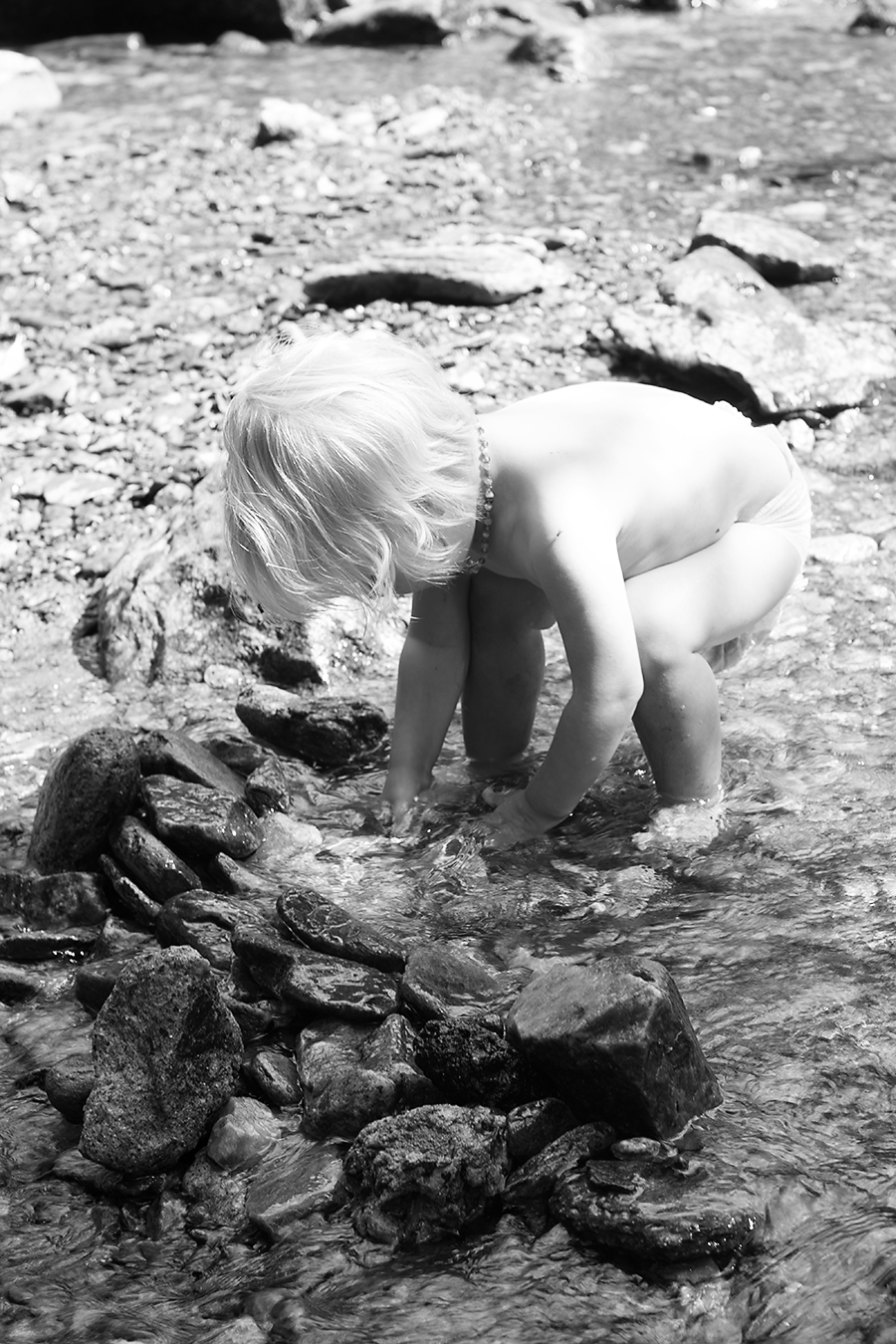
Is the Zone System Irrelevant with Current Technology Advances?
Light meters in modern cameras are more sophisticated than those used in Ansel Adam’s day. They are multi-segmented and attempt to balance the light across the image out; that’s why shooting in Auto mode with a modern digital camera often produces satisfactory results. Many photographers think digital photography brings about the death of the Zone System; I am not one of those photographers.
As I mentioned before, I do not like math… but I do like science and every single one of my hobbies require the math part of science. If I don’t cut or piece a quilt top exactly there will be wonky spots. If I don’t check my gauge when I’m knitting then my result could be wildly bigger or smaller than expected. For me the zone system is a system of measurement that’s super helpful when I’m outside with a highly contrasted scene. I’d rather lean on it than spend a lot of time fiddling with taking a shot and then looking at my LCD and then readjusting repeatedly to get the image I envisioned.
Yet at the same time, I’m not going to say that this system will work for every photographer. If the math of stops and the identifying of zones sort of blows your mind, then this isn’t the system for you. Be critical about what works for you. You’ve grown enough in your skills and should be progressing your way through conscious (although maybe a bit slow) competency of manual mode.
Wrapping up Manual Mode and a Quick Assignment
This week is my last post on manual mode. I’m hoping your well on your way to understanding setting your own exposure and are able to navigate manual mode with a bit of growing confidence.
Your assignment this week is to leave me a comment here about: What are you understanding? What are you struggling with? What would you like clarified? What helped you the most? If there are enough questions, I’ll address them in a seperate FAQ Manual Mode Post. If not, I’ll make a point to answer each of you in the comments. I’m so looking forward to hearing from you and I hope to see your images in the Quiet Graces Free Beginner Photography Class Flickr Pool very soon!
03
2013It’s your baby’s first birthday. You really want to shoot in manual mode, but what if you don’t get things right? What if the test image you saw on your LCD is just a tad too dark or too light? What if you mess up?
Next week we’ll jump into another math/stop based concept that helps us get exposure right the first time, but this week I’m going to teach you a little automatic cheat for those situations where you know you’re close but really don’t want to mess it up and miss the moment.
Exposure Bracketing
Back in the old days of film, if we were unsure about an image, we exposure bracketed. That meant we took an image at a zero exposure value according to our meter, then we moved both one stop up and one stop down and took two more images. If we were OCD (and had film to waste) we might do five images. Usually this would be done for a heavily contrasted image like a sunset or sunrise over a gorgeous landscape.
Most cameras come equipped with an automatic exposure bracketing mode. When toggled on, exposure bracketing takes a rapid burst of 3 or 5 images where the camera will calculate the stops for you both up and down each type you press the shutter release. In your baby’s first birthday scenario or any scenario where you are not completely sure about getting exposure right in camera: use exposure bracketing.
Exposure Bracketing Assignment
Consult your manual now and figure out how to turn on exposure bracketing. I actually had to consult my manual for my new camera on this one (Did I tell you I had a new camera? Sony a77. I’m reading a manual right along with you!) and I found that I actually have a dedicated button for braketing/self-timer. Maybe you do too, but otherwise it’ll likely be an option on your camera menu 🙂 Like me, you may find that you have a few options for how your camera brackets. Read the manual to find out the benefits of each option.
Use it this week while you keep on practicing in manual mode.
Upload some photos in our Flickr Group (it’s kind lonely over there… ya’ll are sorely missed, but I hope you’re enjoying your summer vacations!!!).
25
2013So week one of manual mode, you learned to adjust the dials and play around. Week two week dove right into the technicality of stops. This week I’m going to walk you through a typical manual mode workflow. This whole post will be a do-while-reading assignment. So grab your cameras and find something in your reading space that it is photo worth. Ready, set, go!
Manual Mode Workflow
Alright, you’ve got your camera. You’ve switched it into manual mode and you’ve found something interesting. Let’s start exercising our manual mode workflow muscles.
Set White Balance
Glance around your lighting situation and access whether you want to change white balance. I’m shooting outside in open shade and so I set white balance for shade.
Set your white balance and move on to ISO.
Set your ISO
The spot I’m in has a good bit of dappled shade, but is overall pretty bright. I set ISO at 160.
You’re taking a guess here but you should be close to spot on. Back in the old days when film had the ISO rating rather than a sensor, a photographer would pick out their film based on where they were shooting. Outside in bright daylight: grab a roll of ISO 50 or 100 or 200. Varied conditions, some outside some inside: ISO 400. Inside a building: ISO 800. Pretty dark: We’d push process our ISO 400 or 800 to 1600 or 3200 or fork over the big bucks for a roll of film with that ISO rating.
So what are your lighting conditions? Pick your ISO and lets move on.
Choosing what to Change Next
Now comes a decision: is aperture more important to your composition or shutter speed?
My goal is to capture my daughter playing while blurring out the background. To blur the background I know I need a wide aperture. She’s also moving pretty fast so I know a wider aperture will allow for a faster shutter speed. I’ve decided aperture is my most important setting.
If you have a fast subject and want to blur motion or freeze motion, pick shutter speed first.
Set Your Most Important Setting
I’m going to set my aperture at f/2.5 which is pretty wide open but not so wide that my fast moving subject will move too much after I lock focus. You might want your aperture at f/22 to capture the glory a full landscape scene. Or you might be setting it around f/5.6 to capture a family of 4 in good focus but still apply background blur.
You might be setting your shutter speed at 1/125 of a second or above to freeze motion or slower than 1/60 to capture motion occurring.
Now that you’ve picked what’s most important to your composition, set it.
Set your Least Important Setting
Now change your least important setting for your desired composition. My shutter speed landed at 1/160 of a second zeroed out on the exposure value/bias scale.
Take your First Shot
In film days, we didn’t take more than two shots and we couldn’t look to check and see if we got it right on an LCD screen. I’ll talk a little about one of the processes that helped us get it right the first time in the next lesson.
However, in these digital days we have the freedom to check and make sure we got it right. Use that freedom! Look down at your LCD and check out that image. Would you like it to be brighter? Darker? Aperture wider or more closed down? Does your shutter speed need to be faster? Do you need to change the ISO so that you can have a faster shutter speed or more closed down aperture?
Adjust your settings if you didn’t love your first image and try again. I was pretty happy with this shot. I had spot metered (focused on the upper left eye) and I loved the interplay of contrast in both the mud and light skin and her shadowed eye. So I didn’t try again 🙂
The Benefit of Manual Mode
By now you’re thinking, “Gee, this is a lot of work just to take two pictures. Why shouldn’t I just stick it in one of the Auto Modes and let the camera do the work?”
The benefit of shooting in manual mode is that you become the one to evaluate what you need to do to create your image. You’re also able to change settings to get a brighter or darker exposure for your desired outcome as well as adapt to new lighting situations relatively quickly compared to setting exposure compensation in Program mode.
If we stick the camera on Auto then we don’t get to change according to our scene. The camera meters everything for zero and assumes everything is okay, picks a mid aperture, picks a mid shutter speed, or pops up the flash and just takes a picture.
When you begin to shoot in manual, you’re moving from a documentarian to an artist who is evaluating a scene and actively choosing what portion will draw the viewers eye.
Can some of that be done in Aperture, Shutter, or Program Mode? Sure! And there are definitely seasons where I switch over to aperture or Program. But the challenge of manual mode is that I’m responsible for creating the outcome that I desire. It makes me think and respond to changing conditions.
Your Assignment
Go out there and begin mastering your Manual Mode Workflow.
- Pick three or four scenes and start creating art. You should be ready to approach a calm mid-speed preschooler (but maybe not a lighting fast crawler/toddler) after two weeks of practice with changing your settings in manual.
- Pick at least one or two challenging scenes that are either brighter than most (snow, portraits on a beach, white on white) or darker than most (photographing a stage lit recital, capturing something at night). These will challenge you to not always set your exposure value as zero. You’ll learn which lighting situation you’ll want to move toward +1 or -1 in exposure value.
- Upload your final images with a description of what you did AFTER you checked your LCD readout of your first image. (you may need to take notes in the field) What did you change? Why? This is the most important part of the whole assignment. It’s designed to get you thinking about the whys of what you did to make this an image that you liked.
